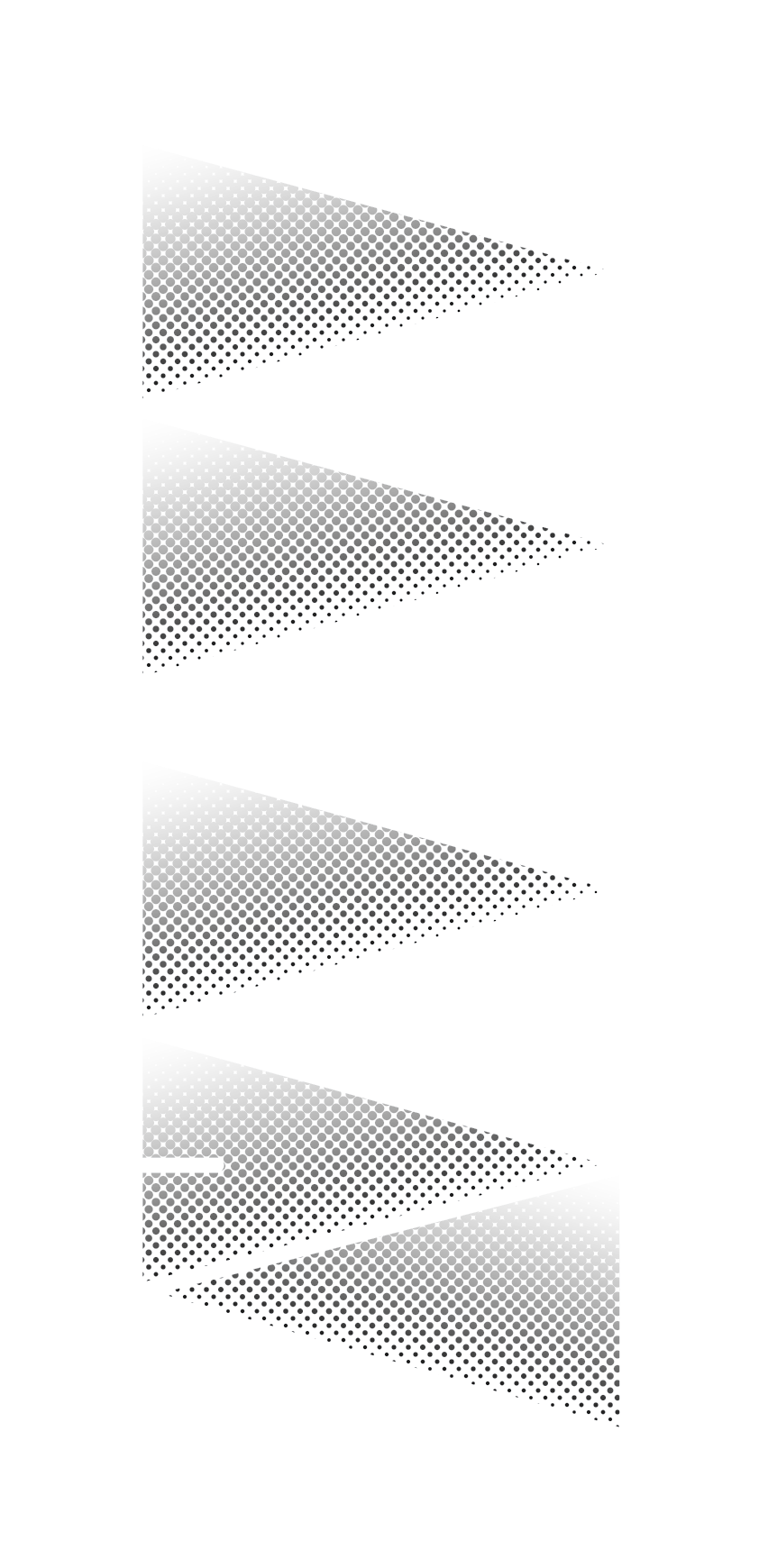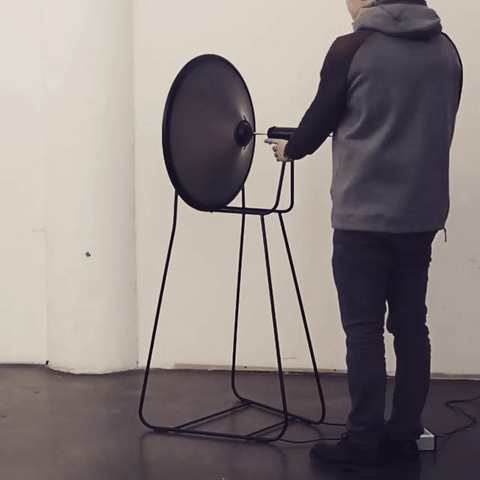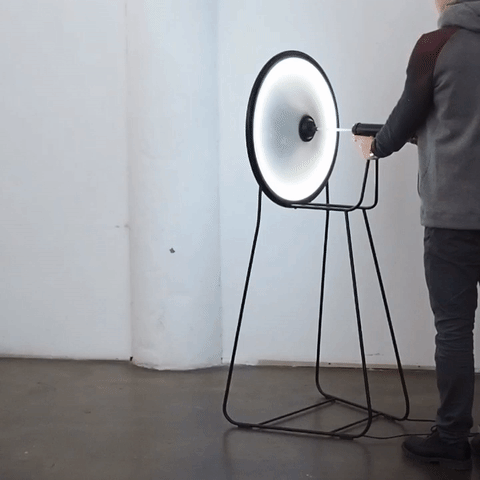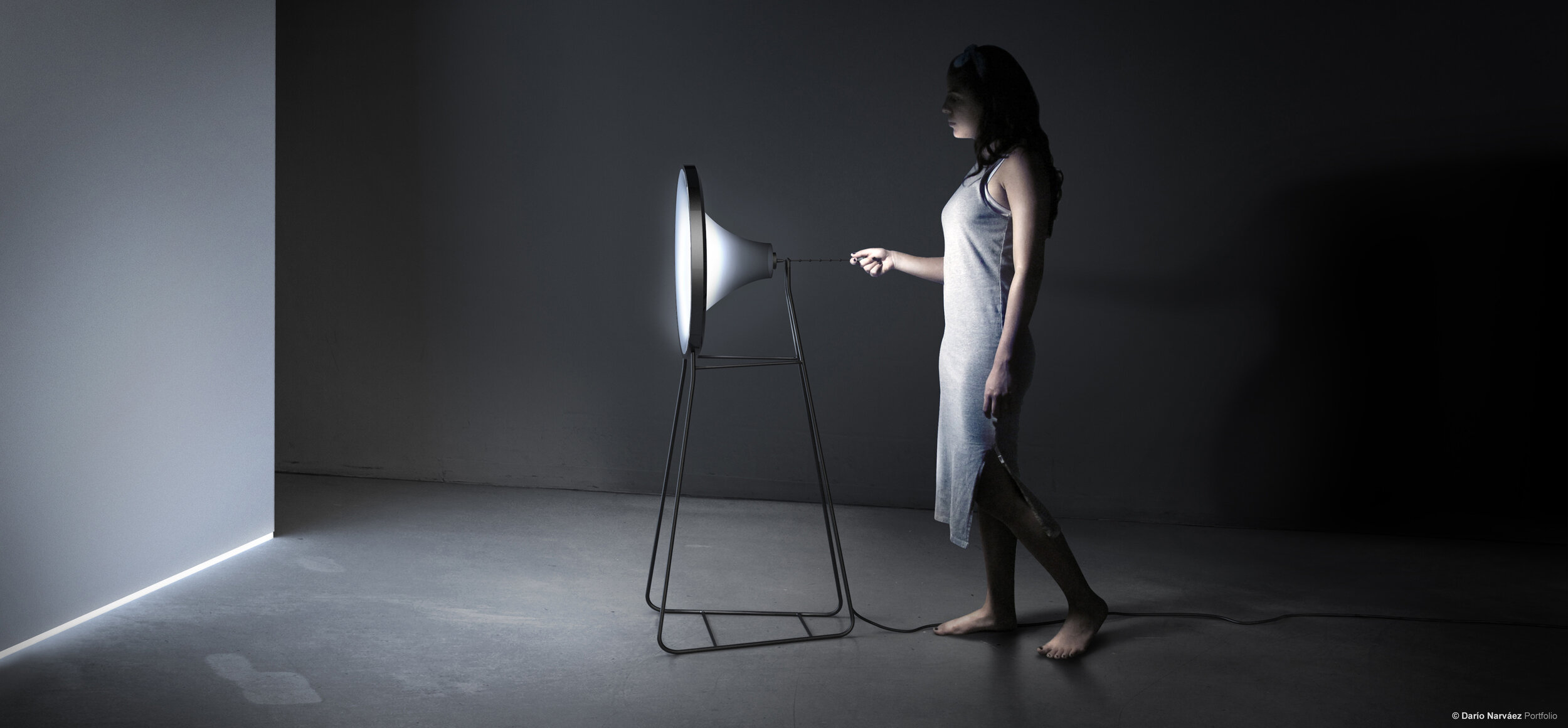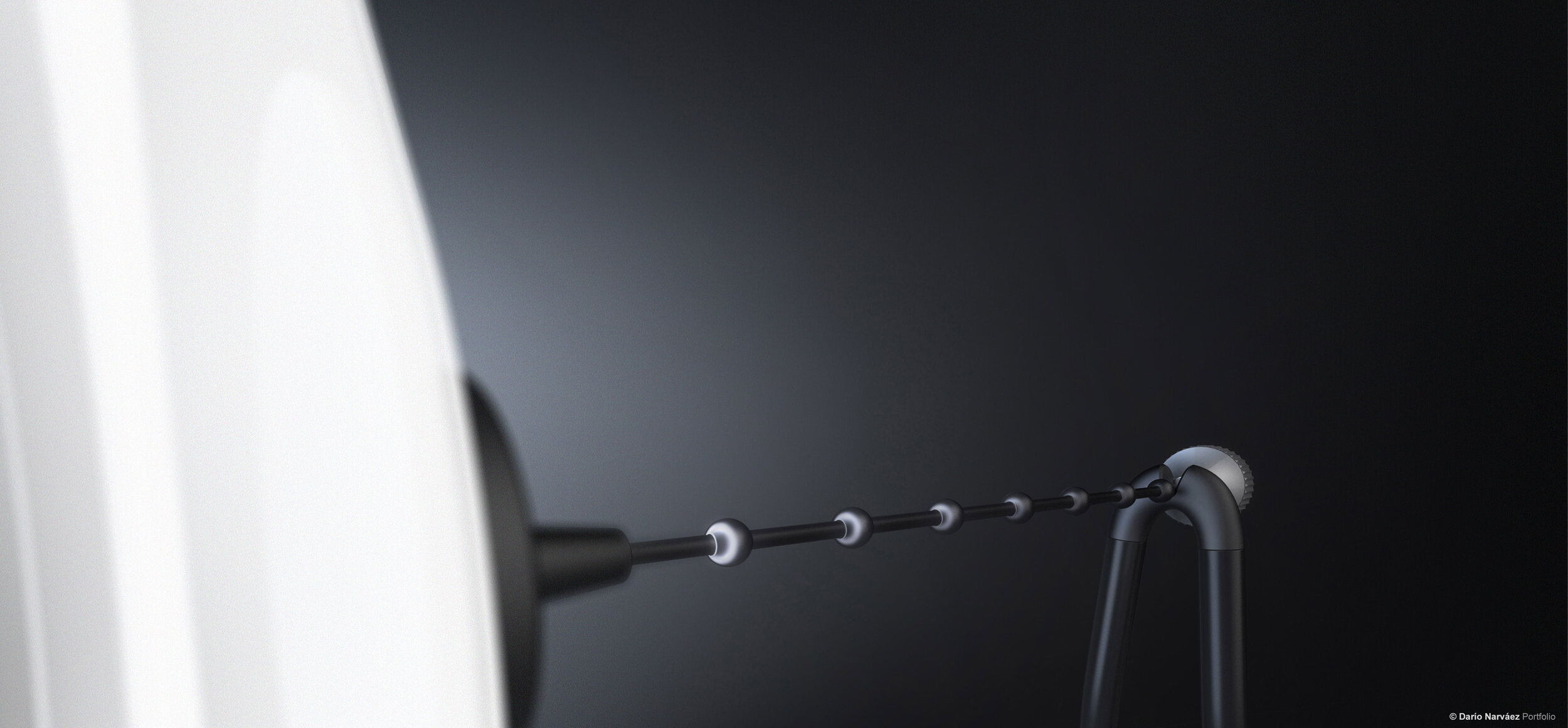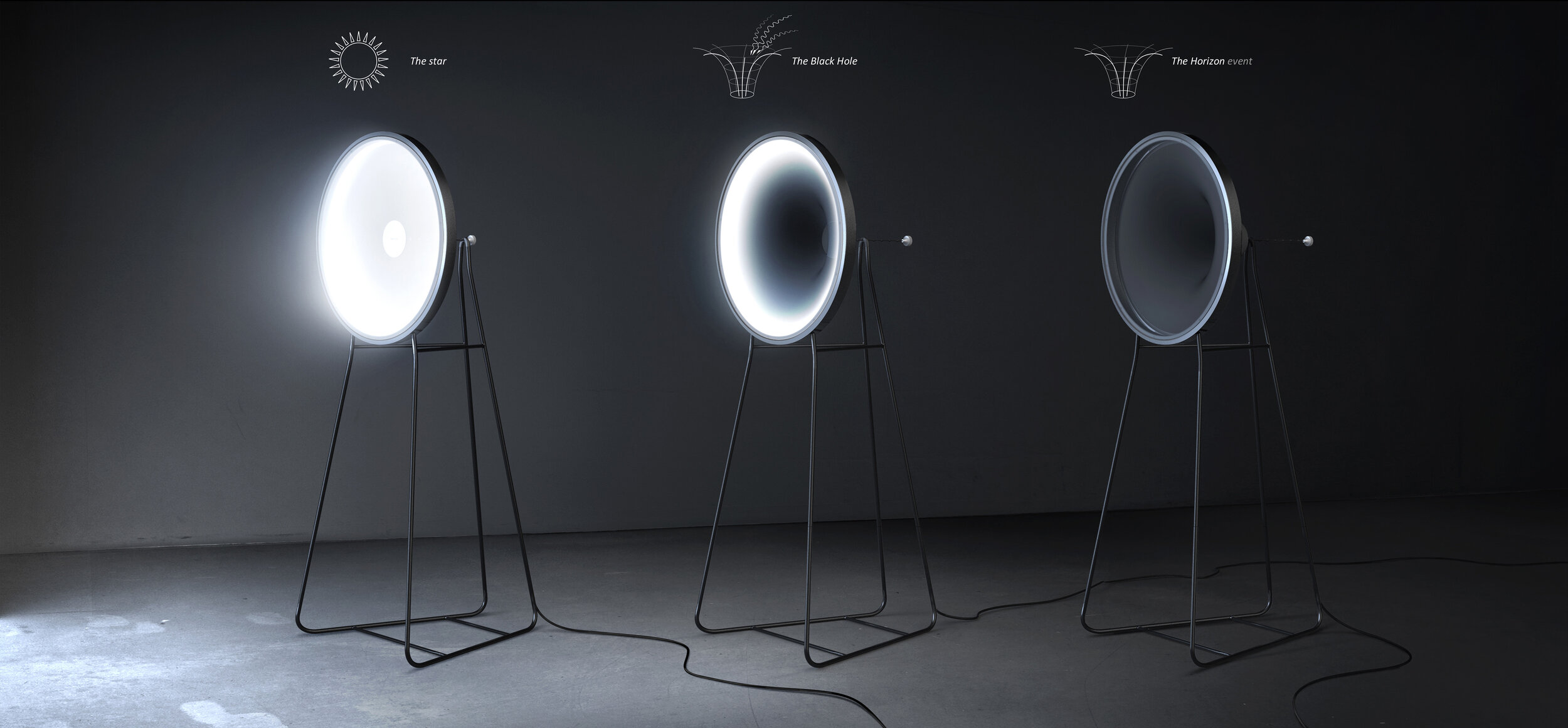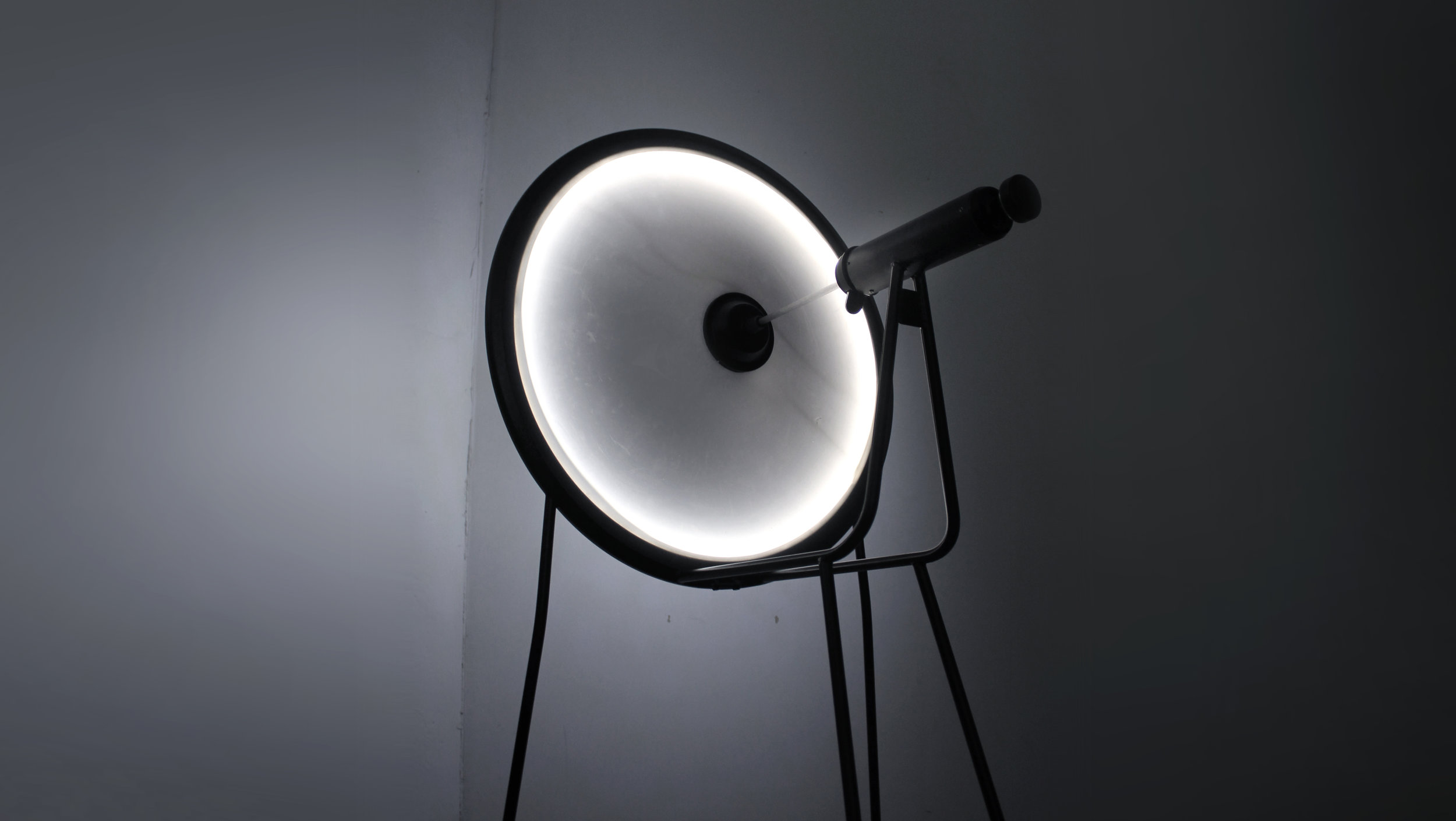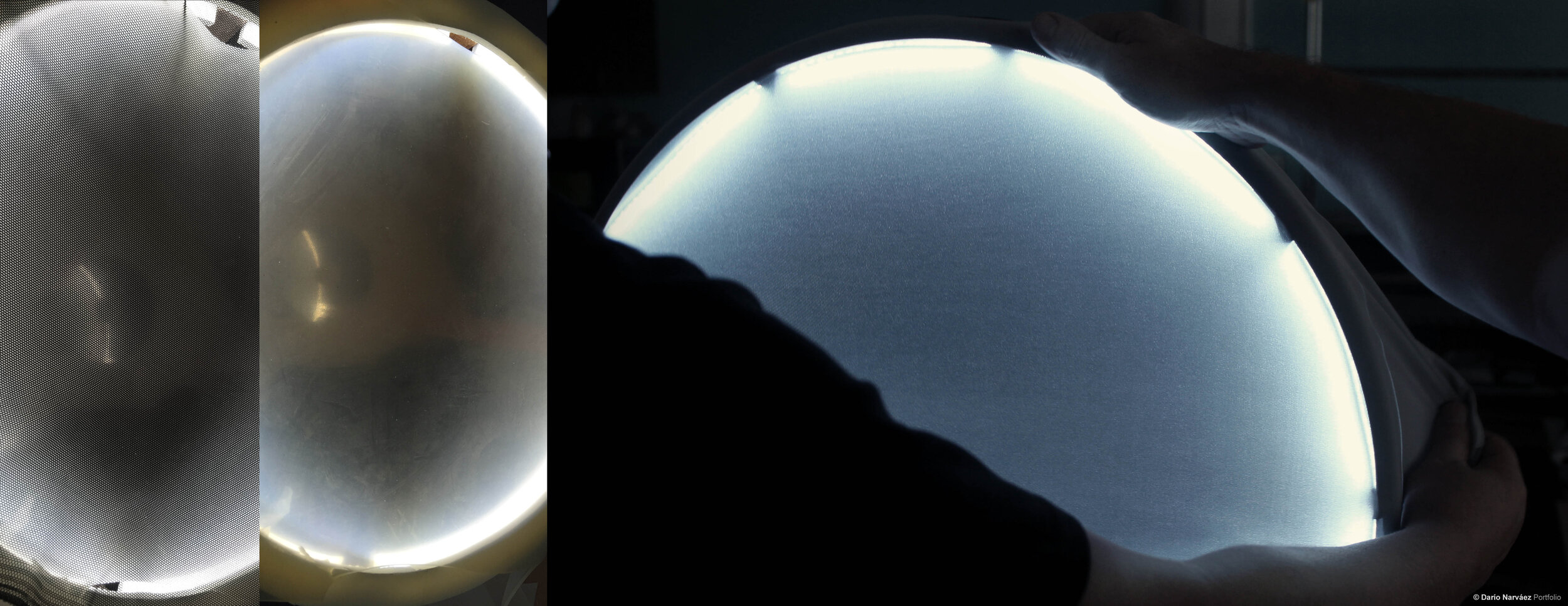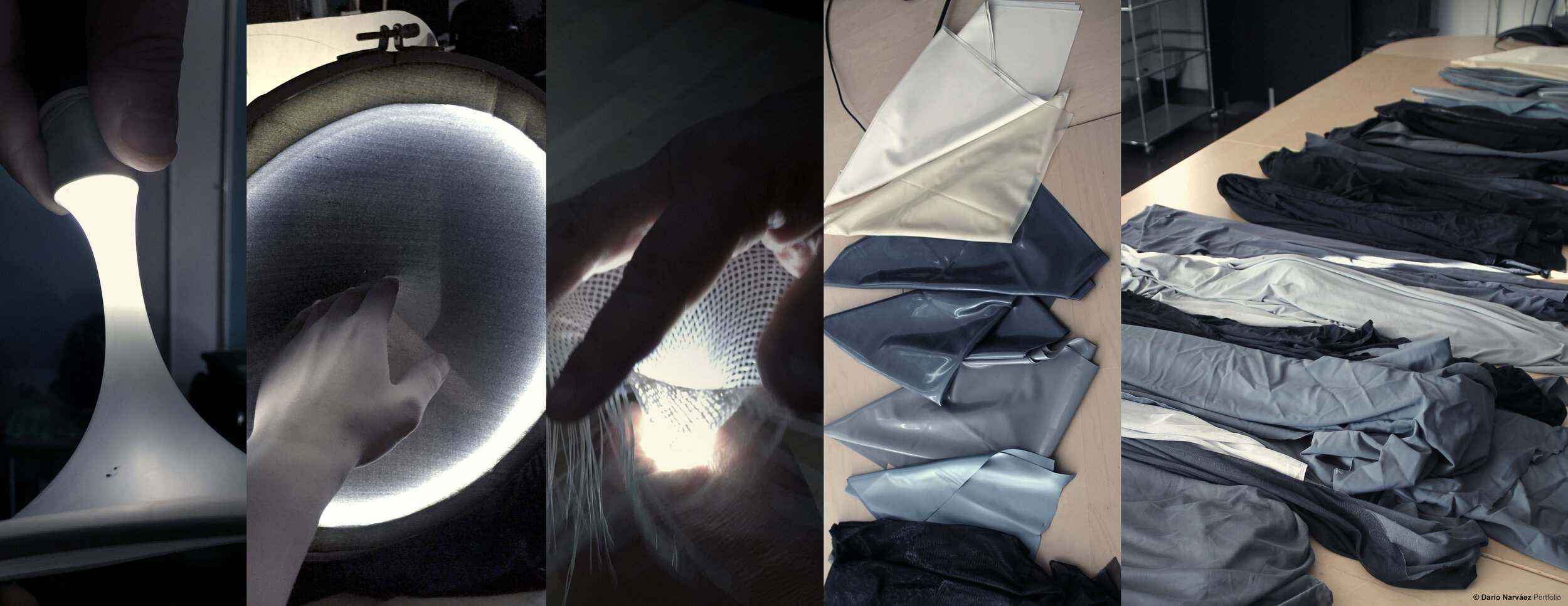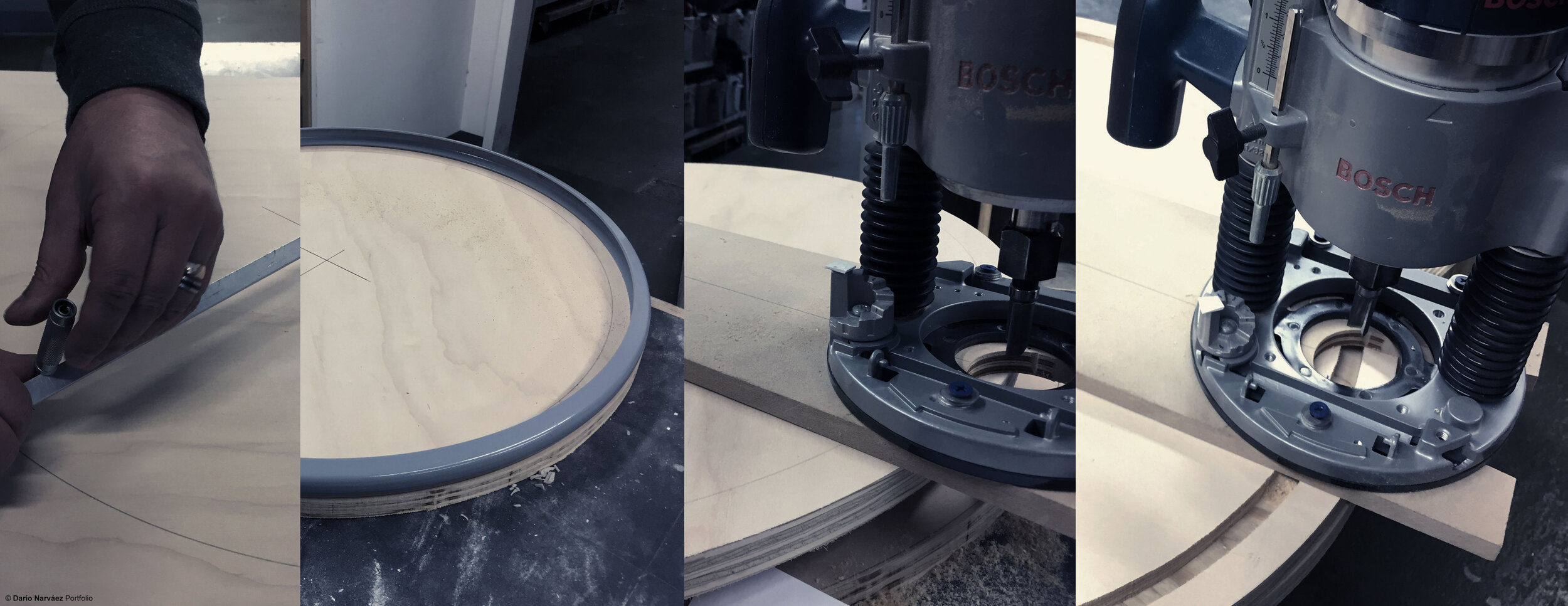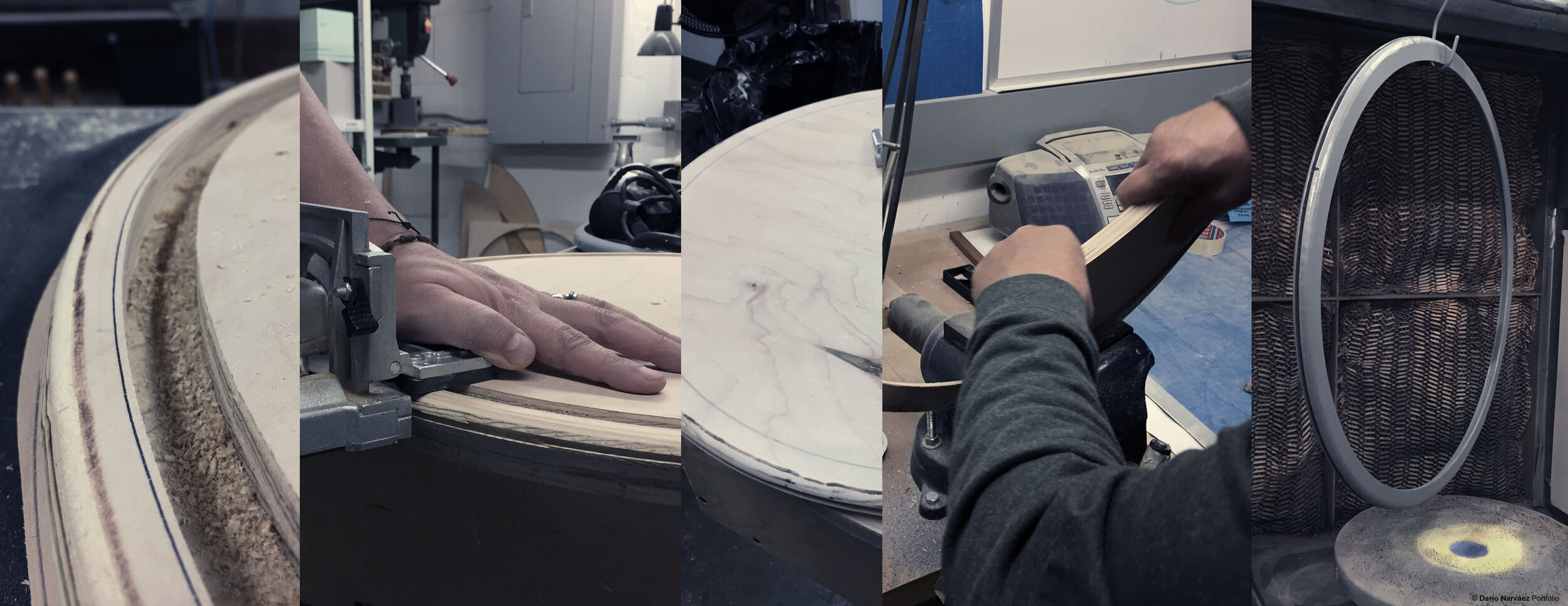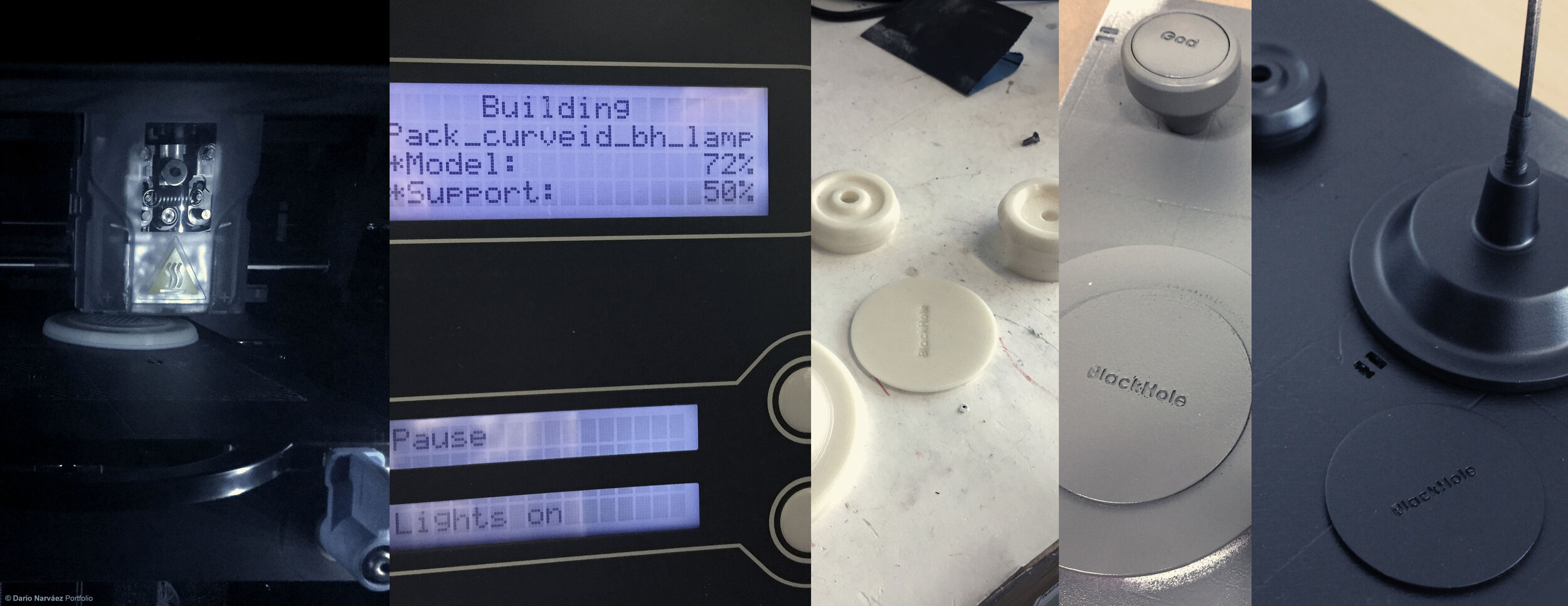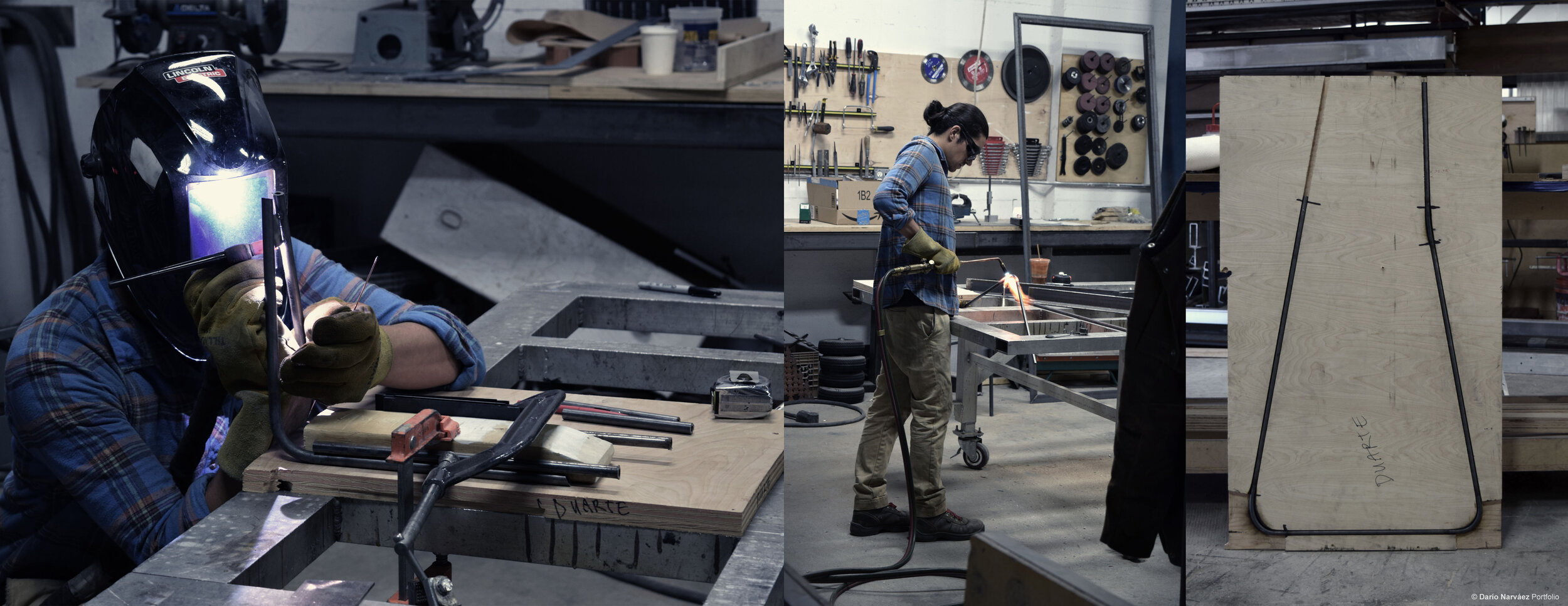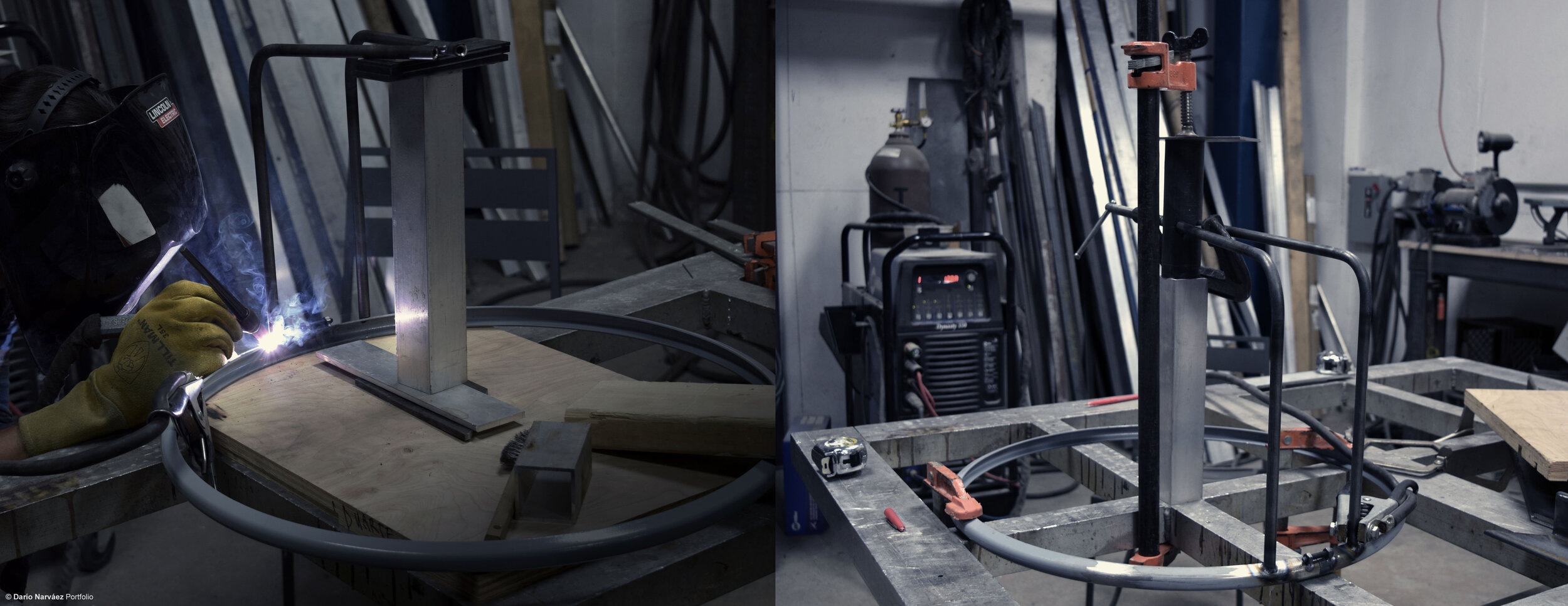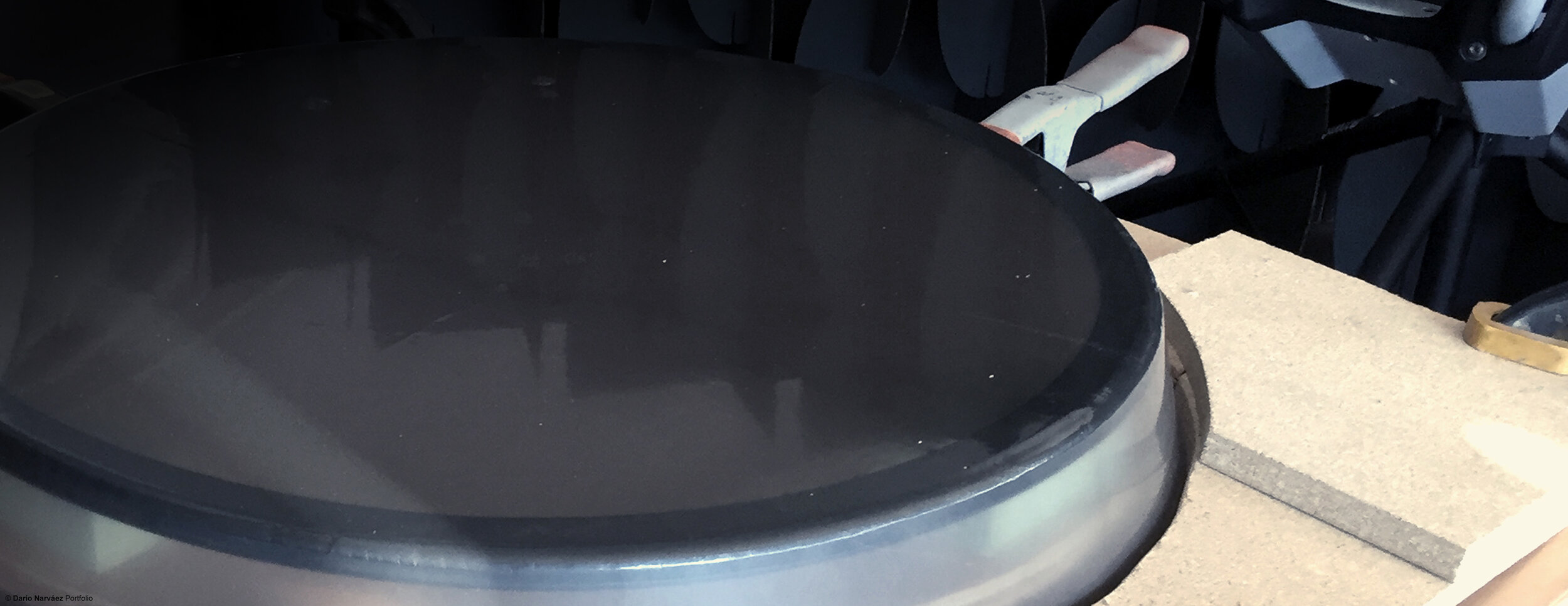Inspired by the darkest Universe mystery
Designed by Dario Narvaez and Anthony Baxter / Prototype: Curve ID Team
Winner project in the Established category in the L A M P Design Competition. The lamp was exhibited in the JAN KATH showroom in Vancouver, BC in 2016, as well as in the Consulate of Colombia in New York.
A popular depiction of a black hole is an unseen force of nature drawing light down to a single point in space. Using this analogy, the ‘Black Hole Lamp’ controls the intensity of the light being emitted by creating a funnel from which the light cannot escape.
In the ‘on’ position the reflective disc of material is fully illuminated, but as the flexible disc is drawn back towards the center of the black hole, the light gets dimmer until it eventually disappears. The ‘Black Hole Lamp’ is effectively dimming the light as it changes shape, in the same way a black hole draws in light and matter by altering the fabric of space.
The radiant and fully illuminated disc symbolizes "The Star" within the context of this design. By pulling the flexible material backward, one can adjust the intensity of the light emitted, similar to the energetic pull of an active black hole. Gradually, as the material is drawn back, the light becomes consumed, metaphorically mirroring the devouring nature of a black hole, ultimately leading to the lamp's gentle extinguishment.
In this way, the interplay between the flexible material and the light serves as a captivating metaphor, representing the delicate balance between illumination and darkness, life and its eventual cessation. It invites contemplation on the cosmic forces that govern our universe and the transient nature of existence, evoking a sense of awe and introspection.
““I thought this lamp was fantastic – so elegant and I love that you have to pull back the metal ‘switch’ to dim the lighting, as if you’re stretching time and space, ... You know, it’s always a dilemma – structure and engineering versus metaphor and poetry – but, in the end, a lamp has to be functional. This one has it all.””
During the early stages of the design process, I explored the concept of celestial bodies, where the central focus was a magnificent star around which planets orbited. To capture this vision, I incorporated a cluster of small balls positioned behind the prominent star, creating a representation of a solar system.
“...the future of the universe is not completely determined by the laws of science, and its present state, as Laplace thought. God still has a few tricks up his sleeve...”
